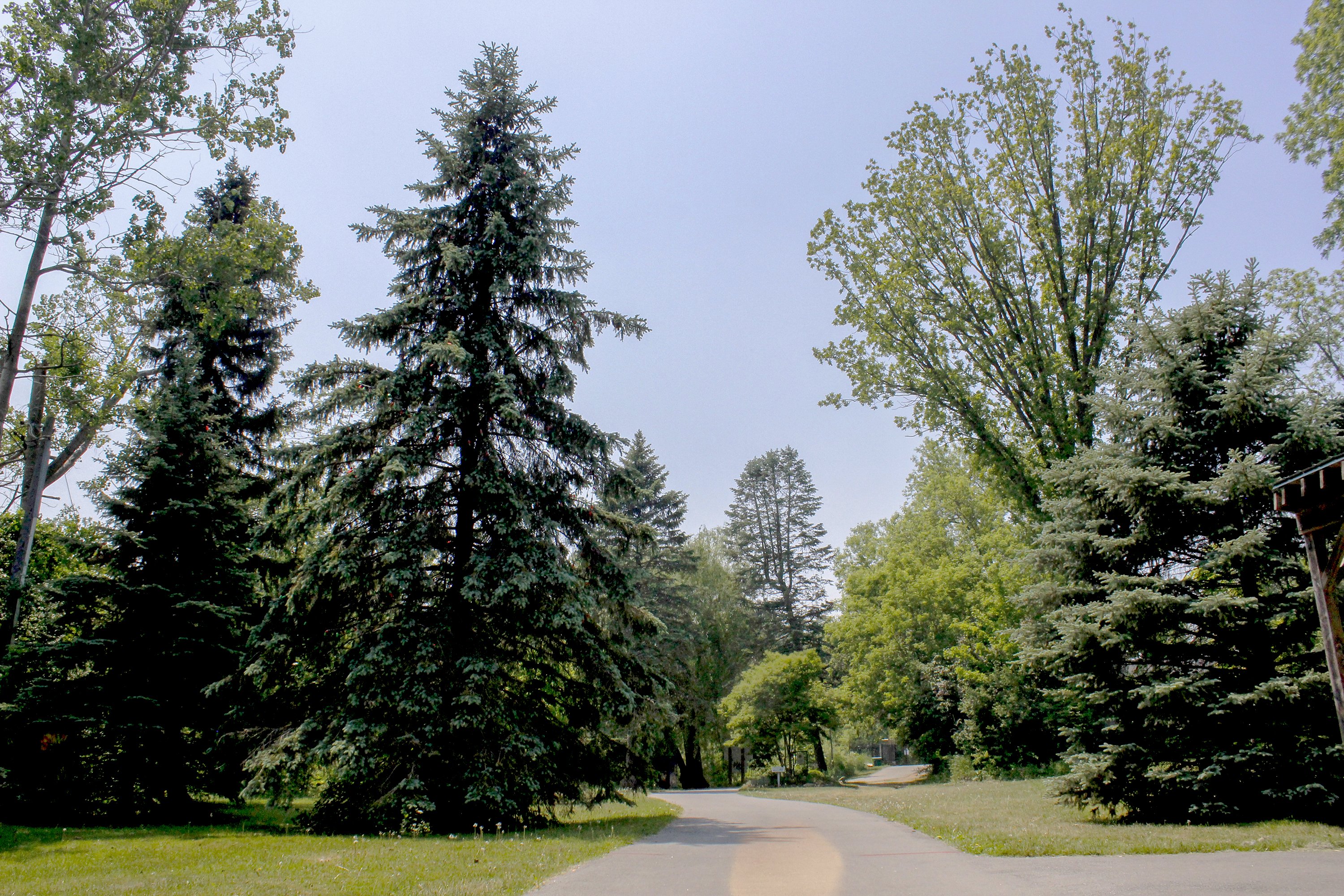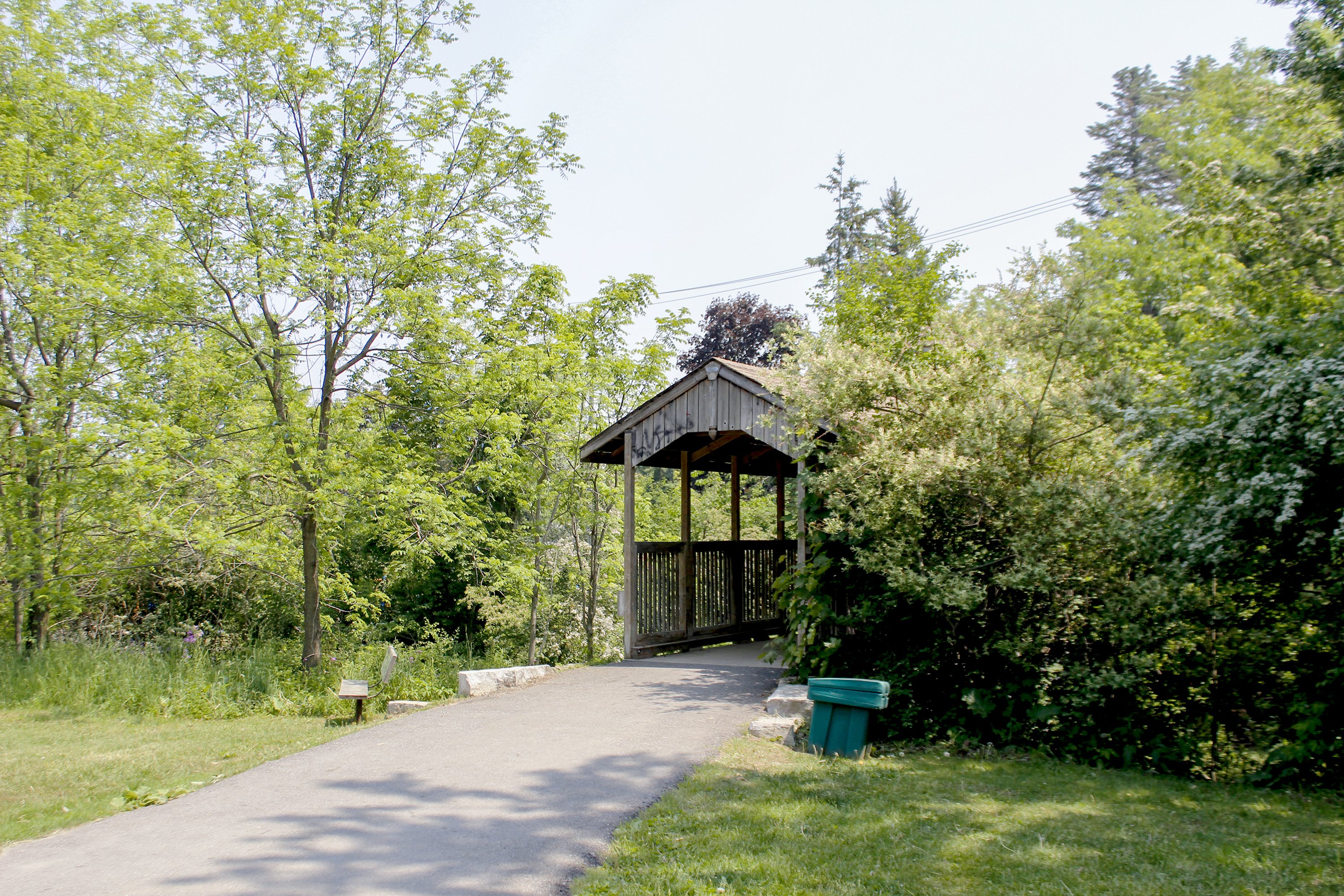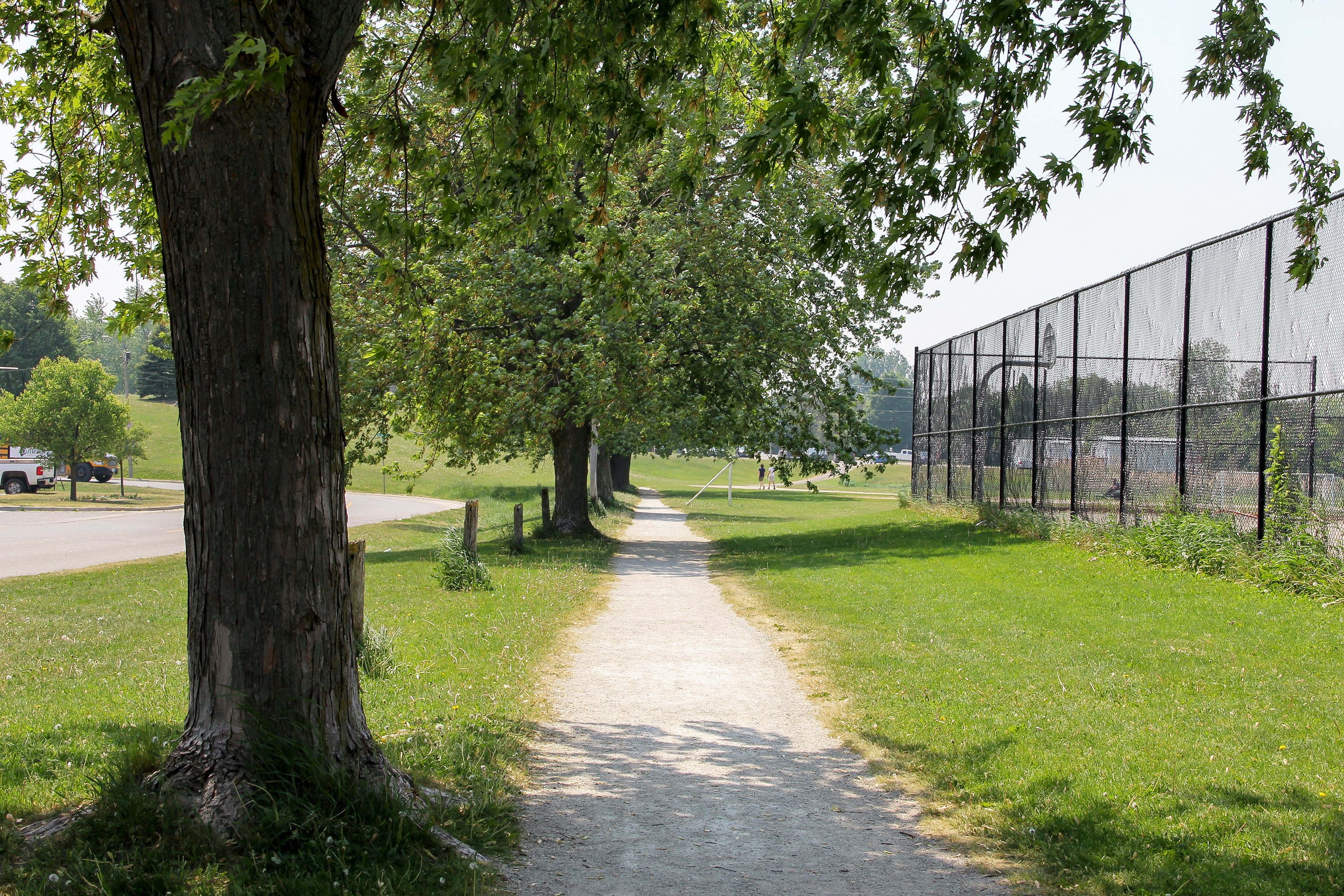
Trees and plants are an important part of keeping our air clean, our environment cool, and providing natural spaces that help create a more environmentally sustainable, beautiful community.
Explore Orangeville's Urban Tree Canopy story map to learn more.
In the Town of Orangeville there are over 8800 trees, spanning through our downtown, residential areas, parks, and more. The Town is responsible for maintaining trees on parklands within the Town border and street trees along the boulevards and Town-owned properties.
Learn about Orangeville's trees
As part of our urban forestry planning, the Town of Orangeville has a digital map of all street trees throughout our community. Using this map, you can research specific trees, such as the ones in front of your home, and learn about their species, review their status, and more.
Urban forestry goals and objectives

As part of our work to create a greener, more sustainable community, the Town has set out a number of goals and objectives in order to meet.
One of the most important goals within urban forestry for the Town of Orangeville is to reach 40 per cent crown coverage by the year 2040. Crown coverage refers to the percentage of an ecosystem that is under the tree canopy.
Here are some of the ways we intend to achieve this:
| Diversifying Town trees |
|
The Town has started to plant a more diverse tree population to assist in fighting off disease and pests that attack certain species of trees. The Town, through the help of professional arborists and horticultural experts, has implemented a new town tree planting list. This list was developed in hopes of creating a more diverse and sustainable urban tree canopy. What are some of the ways diversifying our canopy benefits our tree life?
|
| Recommended tree species |
|
| Young Tree Training Program |
| Each year the Town of Orangeville completes trimming and pruning on its young trees. Trees that have been planted for one (1) year will receive trimming and pruning to aid the growth of the young trees. This is vital to the trees' development as competing branches and leaders can be trimmed out to ensure the tree is properly shaped and growing correctly. |
| Heritage pruning list |
| Each winter the Town completes a pruning of the heritage areas of Orangeville. This is done to help maintain the older and mature trees within the Town. Orangeville’s heritage trees have so many positive impacts including energy conservation, water conservation, pollution prevention, and providing a canopy for habitat and wildlife. If you notice any issues with your mature town tree and you live in a heritage area, please let us know. |
| Community outreach programs |
|
| Planting climate resilient tree species |
|
| Preservation and enhancement of Orangeville's urban forests |
|
| Decreasing tree vulnerability |
|
Street Tree Maintenance

The Town of Orangeville completes maintenance on street trees throughout Town. This can include boulevard trees and other trees on Town-owned property.
| Submit a concern |
|
If you are aware of a street tree in need of maintenance you can submit a work order. |
| What maintenance do we perform? |
|
Protecting Your Tree
Although the Town works hard to maintain our street trees, residents can also help keep our urban canopy thriving. Trees on private property also need love, care, and maintenance.
Here are some ways you can help keep your trees protected and vibrant:
| Watering |
|
Provide a deep watering session rather than frequent shallow watering. This encourages the tree's roots to grow deeper into the soil. Water young trees once a week during dry periods, ensuring they receive approximately 2-3 cm of water. Adjust the frequency based on rainfall and soil moisture levels. Use a slow, steady stream of water or a drip irrigation system to ensure the water reaches the root zone. Avoid wetting the tree's foliage excessively, as it can promote disease. Water around the tree's drip line, which is the outer edge of the canopy. This is where the majority of the tree's absorbing roots are located. |
|
Fertilizing |
|
Soil testing: Conduct a soil test to determine the nutrient levels and pH of your soil. This will help you identify any deficiencies or imbalances. Organic matter: Improve the soil's fertility by adding organic matter such as compost or well-rotted manure. Spread a layer around the base of the tree, but avoid direct contact with the trunk. Balanced fertilizer: If your soil test indicates a need for additional nutrients, use a balanced, slow-release fertilizer specifically formulated for trees. Look for a fertilizer with an N-P-K ratio (nitrogen, phosphorus, potassium) appropriate for your tree species. Timing: Fertilize in early spring before new growth starts or in late fall when the tree is entering dormancy. Follow the manufacturer's instructions for application rates. Application method: Spread the fertilizer evenly over the soil surface within the tree's drip line. Avoid piling it against the trunk, as it can cause damage. Watering after fertilization: Water the tree thoroughly after applying fertilizer. This helps the nutrients move into the root zone and minimizes the risk of burning the roots. Repeat applications: Repeat fertilization annually or as recommended by the soil test results. Avoid overfertilization, as it can harm the tree and contribute to water pollution. |
| Burlapping |
|
Burlapping is commonly used to protect young or newly planted trees from harsh winter conditions, including strong winds, freezing temperatures, and sunscald. It helps create a barrier that shields the tree's trunk and branches from excessive moisture loss and frost damage. If you've recently pruned your tree, burlapping can offer some protection by minimizing stress on the exposed branches and reducing moisture loss. Evergreen trees, such as spruces or firs, are more susceptible to winter burn and desiccation. Burlapping can help shield their foliage from drying winter winds and reduce moisture loss through the needles. Burlap should not be left on the tree for an extended period as it can restrict growth and cause girdling if not removed in a timely manner. Burlapping is typically a temporary measure to provide seasonal protection. Burlapping GuidelinesUse breathable burlap: Choose burlap made from natural fibers that allow for air circulation and moisture exchange. Avoid using plastic or synthetic materials that can trap moisture and cause rot. Proper installation: Wrap the burlap around the tree, covering the foliage if necessary, but leaving the bottom open to allow airflow. Secure it with twine or rope, ensuring it is tight enough to stay in place but not overly constricting. Remove in the spring: Remember to remove the burlap in early spring before new growth emerges. Leaving burlap on the tree for an extended period can lead to issues such as girdling or fungal diseases. If you're unsure whether or not to burlap your tree or you need specific guidance for your tree species, consult the Transportation & Development team for advice based on your tree's needs and the local climate. |
| Weed whacker Protection |
|
Protecting your trees from weed whackers (string trimmers) is important to prevent accidental damage to the tree's bark and roots. Create a Mulch Ring: Clear an area around the base of the tree, extending at least a few feet outward, and apply a layer of organic mulch, such as wood chips or bark. This mulch ring serves as a protective barrier, absorbing the impact of the weed whacker and preventing direct contact with the tree's trunk.
Install Physical Barriers: Use physical barriers, such as plastic or metal tree guards or fencing, around the tree's trunk to provide a more robust shield against the weed whacker. Ensure the barrier is tall enough to block the trimmer line and secure it firmly in the ground.
Use Landscaping Features: Incorporate landscape features, such as decorative rocks or plants, around the base of the tree to create a visual buffer zone. This makes it easier for individuals operating the weed whacker to identify the tree's location and avoid accidental contact.
Regular Maintenance: Keep the area around your trees well-maintained by regularly removing weeds and grass manually or with the help of a hand tool. This reduces the need for frequent use of a weed whacker near the tree and minimizes the risk of accidental damage.
Educate Others: If there are multiple people responsible for maintaining the landscape, ensure that everyone is aware of the trees' locations and the importance of avoiding contact with them while using weed whackers. Encourage proper training and communication to prevent accidental damage. Remember, preventing damage from weed whackers is crucial for the long-term health of your trees. Regular monitoring and timely intervention can help identify and address any potential issues caused by trimmer contact. If you notice any signs of damage to your trees, such as wounds or exposed roots, consult with the Town who can provide a certified arborist to assess the situation and provide appropriate care and treatment recommendations. |
| Mulching |
|
Choose the Right Mulch: Select organic mulch such as wood chips, shredded bark, straw, or compost. These materials break down slowly, enrich the soil, and improve moisture retention. Avoid using inorganic mulches like rocks or rubber, as they don't provide the same benefits. Apply an Adequate Layer: Spread the mulch in a ring shape around the base of the tree, extending it out to the tree's drip line if possible. Maintain a layer of mulch with a depth of 2-4 inches. Avoid piling mulch against the trunk, as it can promote moisture buildup and create a habitat for pests and diseases. Keep Mulch Away from the Trunk: Leave a small gap between the mulch and the trunk of the tree. This helps prevent excessive moisture retention, which can lead to rot and fungal issues. Leave a few inches of space around the trunk to allow air circulation and reduce the risk of pests and diseases. Replenish Mulch as Needed: Over time, mulch decomposes and settles. Regularly check the mulch layer and replenish it as necessary to maintain the desired depth. Add fresh mulch annually or as it breaks down to ensure consistent benefits. Extend the Mulch Area: Consider expanding the mulch area to cover a larger portion of the tree's root zone. As the tree grows, it will benefit from an increased mulched area, providing more moisture retention, weed suppression, and temperature regulation. Weed Control: Before applying mulch, remove any existing weeds or grass around the base of the tree. This minimizes competition for water and nutrients, and reduces the need for weed control methods that could potentially damage the tree's roots. Water Properly: Mulch helps retain soil moisture, but it's important to water the tree adequately, especially during dry periods. Ensure that water reaches the root zone beyond the mulch layer. Avoid overwatering, as it can lead to root rot. Monitor for Pests and Diseases: Regularly inspect the mulch layer and the base of the tree for signs of pests, fungal growth, or other issues. If you notice any abnormalities, consult with the Town’s Transportation and Development group. |
Do you have a newly planted tree?
The early years are the most important years! Caring for a young tree is very important as it greatly impacts the development and lifespan of a tree.
| How to improve the development and health of your new tree |
|
Watering: Water deeply but infrequently, providing about 2-3 cm of water per week. Ensure the water reaches the tree's root zone, which is typically located just beyond the drip line (the outer edge of the branches). Make sure to avoid overwatering as it can lead to root rot. Mulching: Apply a layer of organic mulch around the base of the tree, leaving a few inches of space near the trunk. Mulch helps conserve moisture, regulates soil temperature, and suppresses weed growth. Use materials like wood chips, shredded bark, or straw. Maintain a depth of 5-10cm and replenish it as needed. Fertilization: In most cases, young trees do not require additional fertilization if planted in healthy soil. However, if your soil lacks essential nutrients, you can apply a slow-release, balanced fertilizer in the early spring or fall. Remember to follow the manufacturer's instructions carefully and avoid overfertilization, as it can harm the tree. Protection from Wildlife: Young trees may face challenges from wildlife. Use tree guards or fencing to protect the trunk from nibbling animals, especially during the winter when food sources are scarce. Protect the tree from lawn equipment damage by maintaining a clear zone around the base. Monitoring: Regularly inspect your young trees for signs of pests, diseases, or other issues. Look for wilting leaves, discoloration, unusual growths, or insect infestations. Early detection can prevent problems from becoming worse. If you suspect any problems, consult the Transportation & Development team with the Town of Orangeville. Seasonal Care: Adjust your tree care routine according to the seasons. In winter, protect the tree from heavy snow loads by gently brushing off accumulated snow. In fall, continue to water until the ground freezes to ensure the tree enters dormancy well-hydrated. In the spring, check for frost damage and remove any broken branches. |
Please remember that if you suspect any harm or unusual nature to your tree, contact the Town.
